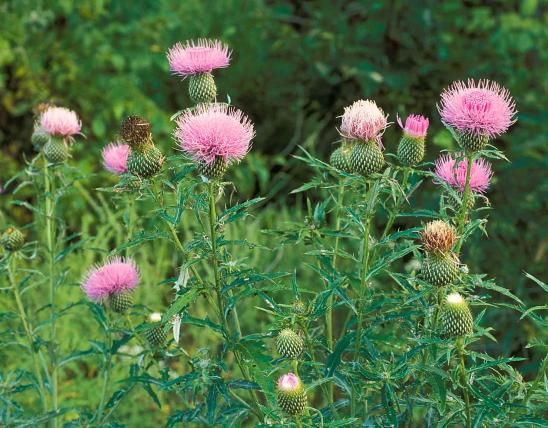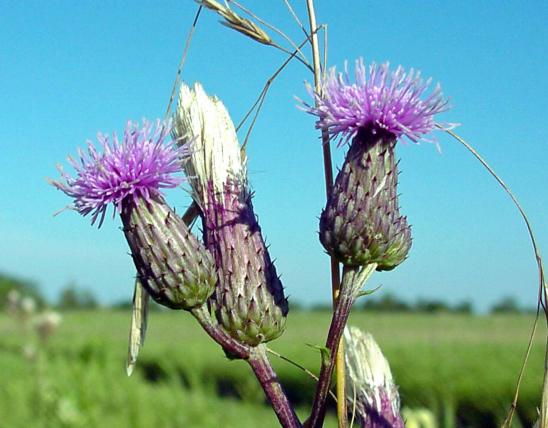
Biennial thistle with the upper stems and branches winged with a wavy, prickly tissue. Flowerheads typical of thistles, reddish purple to purple, with a prominent involucre (the flowerhead base, covered by leaflike bracts), which is covered with a fine, cobweb-like silk. Spiny bracts grow right up to the flowerheads; the middle and lower spines are spreading and yellow or straw-colored. Blooms June-September. Leaves alternate, deeply lobed, hairy, spiny, the upper surface with stiff bristles.
Similar species: The quickest way to distinguish the exotic invasive thistles from our native thistles are the leaves: the leaves of exotics are typically green on both sides, while leaves of natives usually have whitened, woolly undersides. Exotic thistles also tend to have heavily branched stems and more numerous flowerheads per stem. There are nine species of Cirsium in Missouri. Bull thistle and Platte thistle (C. canescens) are the only two with stems having spiny-margined wings. Platte thistle has cream-colored flowers (rarely pale pink) and has been collected only once in Missouri, along a railroad in Jackson County in 1951.
Height: to 7 feet.

Widely scattered statewide.
Habitat and Conservation
Native of Europe. Occurs in upland prairies and openings of disturbed upland forests; also pastures, railroads, roadsides, and open, disturbed areas.
Human Connections
The early leaves can be cooked as a potherb. To prepare the young bloom shoots, wear gloves and snip off leaves and spines. Peel outer rind from stem, cut into 3-inch sections, boil, and eat like an artichoke (dip in butter and pull stems through teeth, discarding stringy part).
Ecosystem Connections
Thistles are a favorite of goldfinches, which eat the seeds and use the silky pappus ("parachutes") to line their nests. Several types of bees, butterflies, and other insects visit the flowers. A variety of caterpillars and beetles chew the leaves, though most mammals are put off by the spines.






























